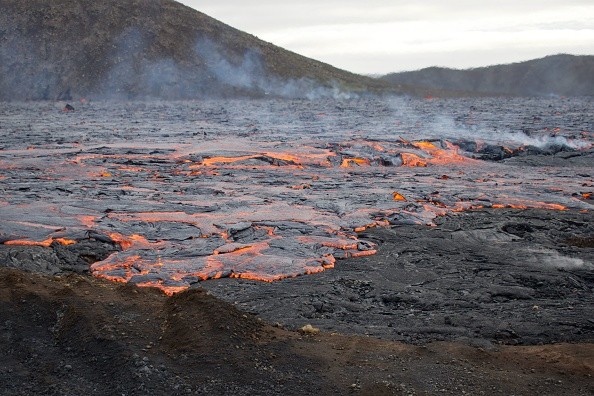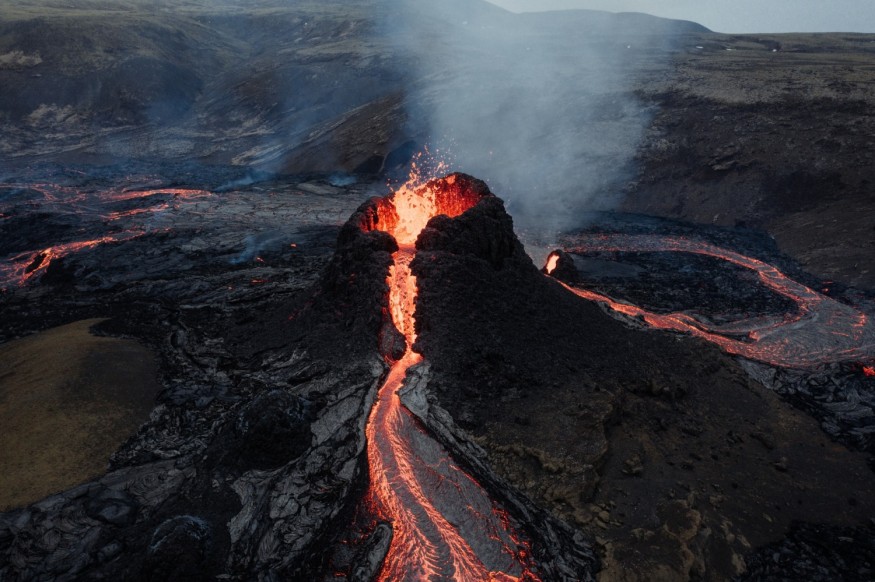A recent volcanic eruption in Iceland poses the same threat as in 2010: the suspension of air traffic between the United States and Europe.

Intense Eruption
The Fagradalsfjall's Geldingadalir volcano in Iceland's relatively unpopulated Reykjanes peninsula has erupted since early today.
The country's capital, Reykjavik, home to the Blue Lagoon geothermal spa and Keflavik Airport, the eruption is not far from any of these locations. The current eruption is in the same area, close to Grindavk, where a six-month eruption began in February 2021.
Although the 2021 eruption caused flight cancellations and delays at Keflavik Airport, it had little effect on more extensive trans-Atlantic air operations. However, the Eyjafjallajökull volcanic eruption in Iceland in 2020 did.
At the time, this was the biggest suspension of aviation travel since World War II. Instrument flight rules traffic was prohibited in a wide portion of the controlled airspace across most of Europe.
The shutdown resulted in the cancellation of tens of thousands of flights, including the crucial trans-Atlantic sector, leaving millions of people stranded in Europe and other parts of the world.
Read also: A Look Inside the Earth: Iceland Volcanic Eruption Opens Opportunitites for Extensive Study
Compared to Previous Eruption

When the volcano erupted in April 2010, it caused a disturbance that extended over some of the busiest airspaces in the world and sent ash up into the atmosphere and the jetstream.
From April 15 to April 23, a large portion of Europe's airspace was shut down; residual ash clouds also prompted the suspension of air traffic over Scotland and Ireland on May 4-5, Spain, Portugal, Italy, Austria, and Germany on May 9, and Irish and UK airspace was shut down once again on May 16-17. For the first eight days, 107,000 flights were canceled, or 48% of all flights, affecting more than 10 million people.
Jet engines that fly over volcanic ash or boat and car engines that breathe ash-filled air can suffer considerable damage. Because volcanic ash is so harsh and abrasive, it may swiftly wear out various aircraft components, including propellers, turbo-compressor blades, and even cockpit glass.
Volcanic ash particles can melt in a jet engine's combustion chamber due to their low melting point, forming a glaze that adheres to the engine's turbine blades, fuel nozzles, and combustors. Even a small quantity of ash can result in complete engine failure in a jet engine.
Harmful Volcanic Ash
Because volcanic ash can enter a vehicle through practically all openings, overheating and engine failure are possibilities in cars and trucks.
Ash is also an extremely abrasive substance. Ash stuck between wiper blades and windshields will scratch and permanently stain the windshield glass, and windows are prone to scratching every time they are lifted, lowered, and cleaned.
Scientists looked at prior eruptions and their potential effects on contemporary aviation after the 2010 occurrence. Professor Bill McGuire of the Aon Benfield UCL Hazard Research Centre claims that an eruption similar to the 1783 eruption of the Icelandic volcano Laki would "had the potential to significantly impede aviation traffic at high northern latitudes for 6 months or more."
Air transport would be limited to the Pacific from China and Japan east to North America and south to Australia, South America, and Africa since flying over Russia would be prohibited owing to the current geopolitical conflict in Ukraine.
Long-haul flights to and from North America that pass via European airspace would have to be canceled or rerouted, adding a lot of time and money to the trip.
Potentially Larger Threat
The size of this developing volcanic eruption in Iceland is unknown to scientists. After a brief period of significant seismic activity, which saw more than 10,000 earthquakes near the volcano since Saturday, including two with a magnitude of 5.0 or higher, today's eruption occurred.
There is now no ash plume emanating from the volcano, only a small amount of gas. The Icelandic Foreign Ministry tweeted, "Risk to populous regions and essential infrastructure is assessed extremely low, and there have been no flight interruptions." The counterpart of the United States in Iceland is the Icelandic Meteorological Office.
The National Weather Service and USGS are still watching the eruption. They will notify the appropriate authorities if a potentially harmful ash cloud forms at the current eruption location.
Iceland Eruption
Volcanic eruptions are not unusual in Iceland. In Iceland, there are 32 active volcanic systems, and one of them is expected to erupt at least once every five years. It is Iceland's seventh eruption in the past 21 years.
For similar news, don't forget to follow Nature World News!
© 2025 NatureWorldNews.com All rights reserved. Do not reproduce without permission.





